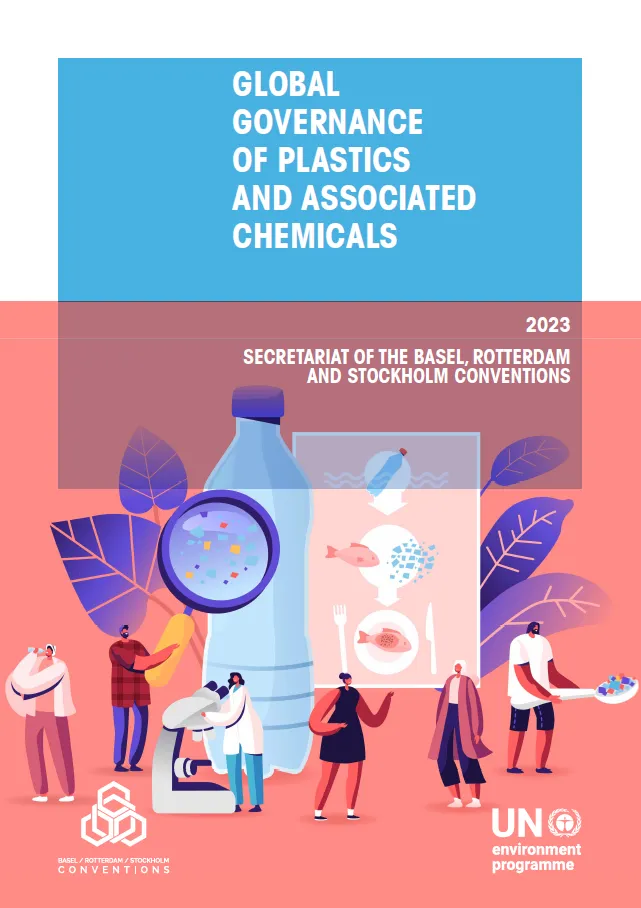News Details

Chemical pollution problems solutions and plastic contamination- UN Report
The "Chemicals in Plastics: A Technical Report" released by the UN on 3 May 2023, attempts to educate the world's population on the frequently disregarded chemical-related problems associated with plastic pollution, including their detrimental effects on human health and the environment, resource efficiency, and circularity. It further emphasises the urgent need for action and provides potential areas for action based on convincing scientific evidence. Additionally, it aims to aid in the development of the plastic pollution instrument based on resolution 5/14 of the United Nations Environment Assembly. Several reliable and openly accessible research studies and projects pertaining to chemicals in plastics and the intersection of science and policy are described in the report.
According to the report, more than 13,000 chemicals have been linked to plastics and plastic manufacture in the most recent studies, out of these more than 3,200 plastic monomers, additives, processing aids, and non-intentionally added substances (NIAS) have been identified as chemicals of potential concern based on their hazardous qualities and 7,000 compounds have been evaluated for their hazardous properties.
The following table lists priority industries, along with a list of the chemicals that should be of particular concern:
|
Priority use sectors |
Chemicals of concern
|
|
Toys and other childrens’ products |
Certain phthalates, BPA, SCCPs, PBDEs, dioxins, toxic metals and metalloids |
|
Furniture |
Certain monomers, toxic metals and metalloids, NIAS |
|
Packaging (including food contact materials (FCMs)) |
Legacy POP additives (e.g., PBDES. HBCDD). |
|
Electrical and electronic equipment (EEE) |
Toxic metals and metalloids VOCS, brominated and organophosphorus flame retardants, certain phthalates leading to elevated levels in interior air and dust and thus elevated human exposure |
|
Transport |
PBDES, HBCDD, SCCPs, PFOS and PFOA |
|
personal care and household products |
Brominated and organophosphorus flame |
|
Medical devices |
Brominated and organophosphorus flame retardants SCCPs, MCCPs, certain phthalates, PCBs |
|
Building materials |
Certain phthalates (e.g., DEHP), PCDD/Fs (from burning of medical waste made of PVC) |
|
Synthetic textiles |
Certain phthalates or other plasticizers, NIAS |
|
Agriculture, aquaculture and fisheries |
Certain phthalates, bisphenols, PCDD/Fs (from farmland open burning, when PVC is present) |
Chemicals in plastics: Exposure of the ecosystem and people
Plastics in the environment deteriorate and fragment into smaller pieces to generate microplastics and nanoplastics as a result of exposure to sunshine, wind, and waves. Other processes that can break down plastics include biodegradation, photodegradation, thermal degradation, and hydrolysis. In contrast to underground, underwater (such as in the deep sea), or in non-surface polar conditions where UV radiation and mechanical erosion are negligible, plastics are more prone to deteriorate on surface soil, surface water, or in the air. Plastics are very persistent in the environment, though, as the bulk of them are produced from non-biodegradable polymers and contain additives like UV stabilisers, antioxidants, and heat stabilisers that are meant to keep them durable.
Chemicals linked to plastic are particularly dangerous to women and children. Exposures can negatively affect a woman during numerous important stages of her life and even affect future generations. For instance, exposures during foetal development and in children can result in problems related to neurodevelopment and neurobehavioral processes. Men are not exempt either, as recent studies show that significant negative impacts on male fertility are caused by existing combined exposures to dangerous chemicals, many of which are linked to plastics.
Replacing chemicals and plastic with more environmentally friendly substitutes
Since using drop-in chemicals (i.e., replacement chemicals that can be utilised without affecting existing production processes) is easiest and frequently seen as most technically viable, dangerous chemicals in plastics are currently generally substituted chemical-by-chemical.
However, it is frequently necessary to consider several other options in addition to particular drop-in chemicals from a much wider perspective. Drop-in chemicals frequently have physicochemical features that are strikingly similar to those of the chemicals they replace; as a result, they may have effects on human and environmental health that are comparable to or even worse.
PLASTIC WASTE MANAGEMENT IN A CIRCULAR ECONOMY
As per the UN-report the following key points can be referred for the waste management.
-
Global plastic flow and waste management
-
Challenges of recycling, energy recovery and managing plastics containing hazardous chemicals
-
Options for recycling and managing plastics containing hazardous chemicals.
-
Developing capacity for waste management, recycling, recovery, and destruction
We acknowledge that the above information has been compiled from Global.


